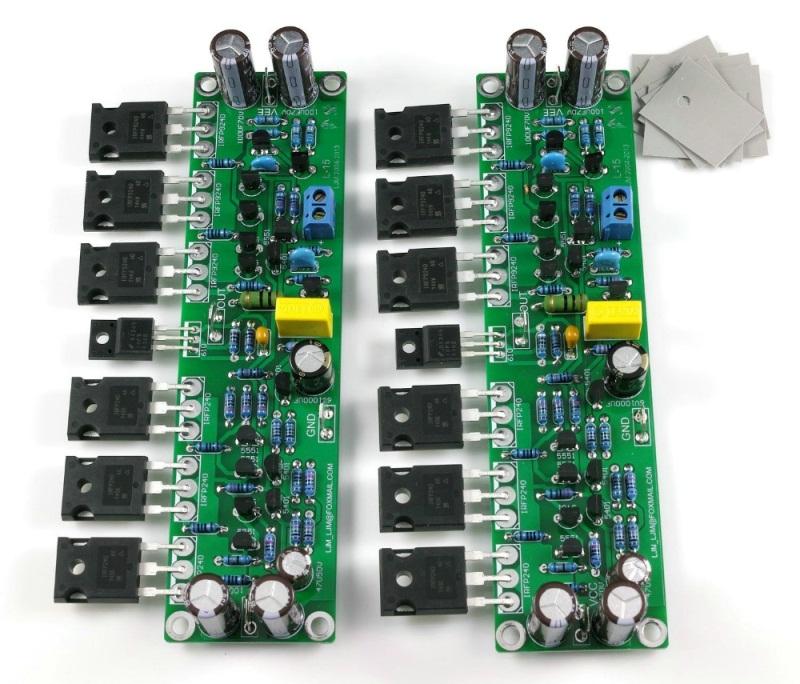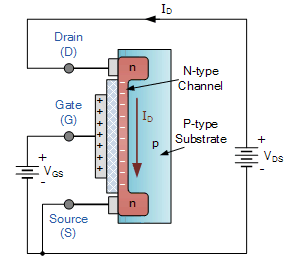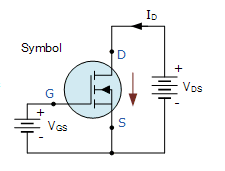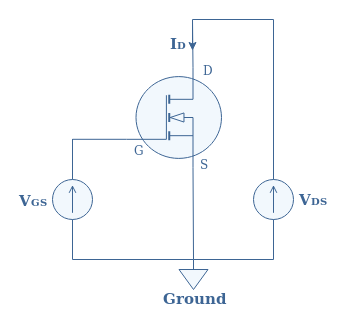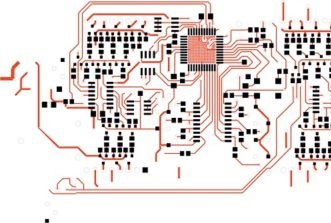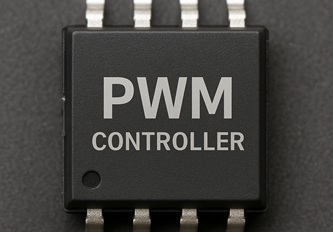Introduction to MOSFET Amplifier
22/02/2023, hardwarebee
When it comes to selecting an amplifier, there are many different types to choose from. While they all have unique advantages and qualities, one of the most popular amplifying components is the MOSFET amplifier. MOSFET amplifiers are incredibly versatile and offer manufacturers a wide range of options in terms of sound quality and power output. In this blog post, we will explore what MOSFET amplifiers are and how they work to create high-quality audio experiences for consumers. We will also discuss some tips for choosing the right MOSFET amplifier for your needs.
Figure 1: MOSFET Amplifier
What are MOSFET Amplifiers?
MOSFET amplifiers (metal oxide semiconductor field effect transistor amplifiers) are a type of electronic amplifier that uses MOSFET transistors as active elements. MOSFETs are a very popular type of transistor, and they have several advantages over other types of transistors. They can be made very small, they require very little power to operate, and they can handle high voltages.
MOSFET amplifiers are used in a wide variety of applications, including audio amplification, RF amplification, and power amplification. MOSFETs are also used in switch-mode power supplies and DC-to-DC converters.
Figure 2: MOSFET amplifier’s inner structure
Figure 3: MOSFET Amplifier Symbol
Why do we use MOSFET Amplifiers?
MOSFET amplifiers are used in a variety of applications due to their many benefits. Some of the advantages of using MOSFETs over other types of amplifiers include:
- MOSFETs can handle much higher voltages than other types of amplifiers, making them ideal for use in high-voltage applications
- They have a very low input capacitance, which means they require less power to operate
- They have a very high gain, meaning they can amplify signals more effectively than other types of amplifiers
- They are very efficient, meaning they generate less heat and waste less energy than other types of amplifiers
MOSFET Amplifier Background and Theory
The metal oxide semiconductor field effect transistor (MOSFET) is the key active component in a MOSFET amplifier. The MOSFET is a voltage-controlled transistor that can amplify both AC and DC signals. The MOSFET has three terminals: the source, the drain, and the gate. The source and drain terminals are where the current flows through the transistor, and the gate terminal controls the flow of current between the source and drain by varying the voltage on the gate.
MOSFET amplifiers are classified as either single-ended or push-pull. Single-ended amplifiers use a single-ended input signal and generate an output signal that is 180 degrees out of phase with the input signal. Push-pull amplifiers use two complementary input signals that are 90 degrees out of phase with each other. The output signal of a push-pull amplifier is in phase with one of the input signals.
MOSFET Types
There are two distinct MOSFET types, which differ according to the operating modes. Moreover, these two kinds have two subcategories.
- Depletion type MOSFET or MOSFET with Depletion mode
N-Channel MOSFET or NMOS
P-Channel MOSFET or PMOS
Depletion type MOSFET
A depletion-type MOSFET typically turns on at zero gate to source voltage. There will be a threshold voltage required to turn the MOSFET off if it is an N-Channel Depletion-type MOSFET. For instance, to turn off an N-Channel Depletion MOSFET with a -3V or -5V threshold voltage, the gate of the MOSFET must be brought down to a negative -3V or -5V potential. For the N channel, this threshold voltage will be negative, and for the P channel, it will be positive. In logic circuits, this type of MOSFET is frequently employed.
- Enhancement type MOSFET or the MOSFET with Enhancement mode
N-Channel MOSFET or NMOS
P-Channel MOSFET or PMOS
Enhancement Type MOSFET
When the gate voltage is zero, the device is still off in the enhancement type. We need to supply a minimum Gate to Source voltage to switch on the MOSFET (Vgs Threshold voltage). However, the drain current is very dependent on this gate-to-source voltage; when the Vgs rises, the drain current follows suit. The best MOSFETs to use when building an amplifier circuit are of the enhancement type. It also has the NMOS and PMOS subtypes, just like a depletion MOSFET.
MOSFET Amplifier Applications
MOSFET amplifiers have a number of advantages over other types of amplifiers, making them well-suited for a variety of applications. MOSFETs can handle large amounts of power, making them ideal for use in high-power applications. They are also very efficient, meaning they generate very little heat and can be used in compact designs. Additionally, MOSFETs have very low levels of distortion, making them ideal for audio applications.
MOSFET amplifiers are employed in numerous applications, such as:
- Audio amplification: MOSFETs are used in high-fidelity audio systems due to their low noise and high voltage gain. They are also used in guitar amplifiers for their clean, high-gain sound.
- Power amplification: MOSFETs are used in power amplifiers for driving speakers due to their high current handling capability and fast switching speed. They are also used in switching power supplies to control the flow of current to the load.
- Switching applications: MOSFETs are used as switches in power electronics and digital circuits to control the flow of current to the load.
- RF amplification: MOSFETs are used in RF amplifiers due to their high input impedance and fast switching speed.
- Automotive electronics: MOSFETs are used in automotive electronics for power amplification and switching applications.
- Industrial control: MOSFETs are used in industrial control systems for power amplification and switching applications.
- Power management: MOSFETs are used in power management circuits to control the flow of current to the load.
- Computer and consumer electronics: MOSFETs are used in computer and consumer electronics for power amplification and switching applications.
Basic Operation of MOSFET Amplifiers
A MOSFET operates as a voltage-controlled device, where the gate-to-source voltage controls the flow of current from the source to the drain. The MOSFET operates in one of three modes: enhancement mode, depletion mode, and linear mode. In enhancement mode, a positive voltage on the gate with respect to the source creates a channel between the source and drain, allowing current to flow. In depletion mode, the channel between the source and drain exists even without a gate voltage. The width of the channel can be controlled by the gate-to-source voltage. In linear mode, the MOSFET acts as a resistor, with the drain current proportional to the gate-to-source voltage.
MOSFET Amplifier Configurations & Signal Response
There are two main configurations of MOSFET amplifiers: the common-source configuration and the common-drain configuration.
The common-source configuration is the most commonly used configuration for MOSFET amplifiers. In this configuration, the input signal is applied to the gate, and the amplified output signal is taken from the drain. The gate-to-source voltage controls the width of the channel, which determines the drain current and the output signal. The common-source configuration provides high input impedance, low output impedance, and high voltage gain.
The common-drain configuration, also known as the source follower configuration, provides low input impedance and high output impedance. In this configuration, the input signal is applied to the gate, and the output signal is taken from the source. The common-drain configuration provides low voltage gain, but it is commonly used for its ability to drive heavy loads and for its ability to provide a high output impedance, which is useful for matching the impedance of the load to the amplifier.
The signal response of a MOSFET amplifier depends on several factors such as the configuration of the amplifier, the type of MOSFET used, the load impedance, and the frequency of the input signal.
In general, MOSFET amplifiers have a fast response time and can handle high-frequency signals well. However, their high-frequency response is limited by the parasitic capacitances of the MOSFET and the load impedance. The common-source configuration has a higher voltage gain than the common-drain configuration, but it also has a lower input impedance and higher output impedance. The common-drain configuration, on the other hand, has a lower voltage gain but a higher input impedance and lower output impedance.
The type of MOSFET used also affects the signal response of the amplifier. For example, enhancement-mode MOSFETs have a faster response time than depletion-mode MOSFETs. The frequency response of a MOSFET amplifier is determined by the cutoff frequency, which is the frequency at which the gain of the amplifier starts to roll off. The cutoff frequency is influenced by the gate-to-source capacitance and the load impedance.
In summary, the signal response of a MOSFET amplifier is determined by several factors, including the configuration of the amplifier, the type of MOSFET used, the load impedance, and the frequency of the input signal. Understanding these factors is crucial in designing MOSFET amplifiers that meet the specific requirements of different applications.
Pros and Cons of Using MOSFET Amplifier
MOSFET amplifiers have a number of advantages over traditional amplifier technologies. They are very efficient, meaning that they can convert a large percentage of the input power into output power. They also have very low distortion levels, making them well-suited for use in high-fidelity audio applications. In addition, MOSFETs are relatively immune to thermal runaway, making them more stable than other amplifier types.
There are some drawbacks to using MOSFET amplifiers as well. They tend to be more expensive than other amplifier types, and they require careful design and layout to avoid potential reliability issues. Additionally, MOSFETs can be damaged by electrostatic discharge, so care must be taken to protect them from static electricity.
MOSFET Amplifier Circuit & Its Working
The MOSFET amplifier circuit is one of the most popular types of amplifier circuits used today. There are many different ways to configure a MOSFET amplifier circuit, but the basic idea is always the same: to use the transistor as a linear amplifier. In order to achieve this, the gate voltage of the transistor must be carefully controlled.
Figure 4: MOSFET electric diagram
One common way to control the gate voltage is to use a resistor divider circuit. This circuit consists of two resistors connected in series between the gate and ground. The value of the resistors is chosen so that when no input signal is applied, the gate voltage will be at its midway point between ground and the power supply voltage. This ensures that there is no distortion in the absence of an input signal.
When an input signal is applied, it will cause a change in the voltage at the gate relative to ground. This change in voltage will be amplified by the transistor and passed on to the output. By carefully controlling the values of the resistors in the resistor divider circuit, it is possible to achieve very high levels of amplification with minimal distortion.
Difference between BJT and MOSFET Amplifier
There are many differences between BJT and MOSFET amplifiers. The most significant difference is that MOSFET amplifiers use transistors with gate electrodes, while BJT amplifiers use bipolar junction transistors. This means that MOSFET amplifiers can operate with very high levels of voltage and current, making them ideal for audio power amplification. Other key differences include:
- MOSFETs can be operated at much higher frequencies than BJTs, making them ideal for use in audio applications where high a frequency-response is required.
- MOSFETs have a much lower input impedance than BJTs, meaning they require less current to drive the same level of output.
- MOSFETs typically have better linearity than BJTs, meaning they can reproduce the waveform of an audio signal more faithfully.
Overall, MOSFET amplifiers offer many advantages over their BJT counterparts. However, they are also more expensive and difficult to design, so it is important to carefully consider which type of amplifier is best suited for your particular application.


